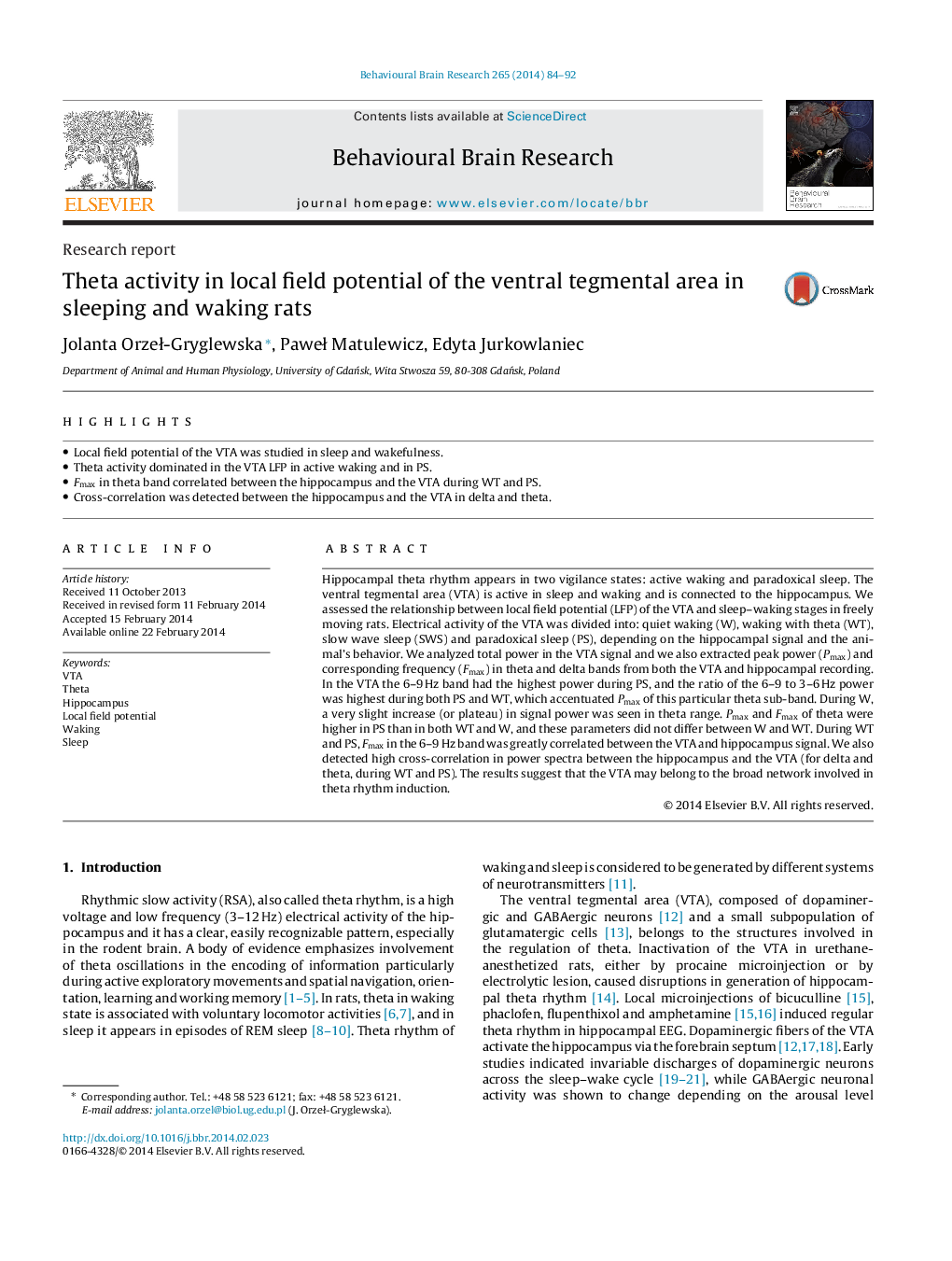| کد مقاله | کد نشریه | سال انتشار | مقاله انگلیسی | نسخه تمام متن |
|---|---|---|---|---|
| 6258293 | 1612967 | 2014 | 9 صفحه PDF | دانلود رایگان |
- Local field potential of the VTA was studied in sleep and wakefulness.
- Theta activity dominated in the VTA LFP in active waking and in PS.
- Fmax in theta band correlated between the hippocampus and the VTA during WT and PS.
- Cross-correlation was detected between the hippocampus and the VTA in delta and theta.
Hippocampal theta rhythm appears in two vigilance states: active waking and paradoxical sleep. The ventral tegmental area (VTA) is active in sleep and waking and is connected to the hippocampus. We assessed the relationship between local field potential (LFP) of the VTA and sleep-waking stages in freely moving rats. Electrical activity of the VTA was divided into: quiet waking (W), waking with theta (WT), slow wave sleep (SWS) and paradoxical sleep (PS), depending on the hippocampal signal and the animal's behavior. We analyzed total power in the VTA signal and we also extracted peak power (Pmax) and corresponding frequency (Fmax) in theta and delta bands from both the VTA and hippocampal recording. In the VTA the 6-9Â Hz band had the highest power during PS, and the ratio of the 6-9 to 3-6Â Hz power was highest during both PS and WT, which accentuated Pmax of this particular theta sub-band. During W, a very slight increase (or plateau) in signal power was seen in theta range. Pmax and Fmax of theta were higher in PS than in both WT and W, and these parameters did not differ between W and WT. During WT and PS, Fmax in the 6-9Â Hz band was greatly correlated between the VTA and hippocampus signal. We also detected high cross-correlation in power spectra between the hippocampus and the VTA (for delta and theta, during WT and PS). The results suggest that the VTA may belong to the broad network involved in theta rhythm induction.
Journal: Behavioural Brain Research - Volume 265, 15 May 2014, Pages 84-92
